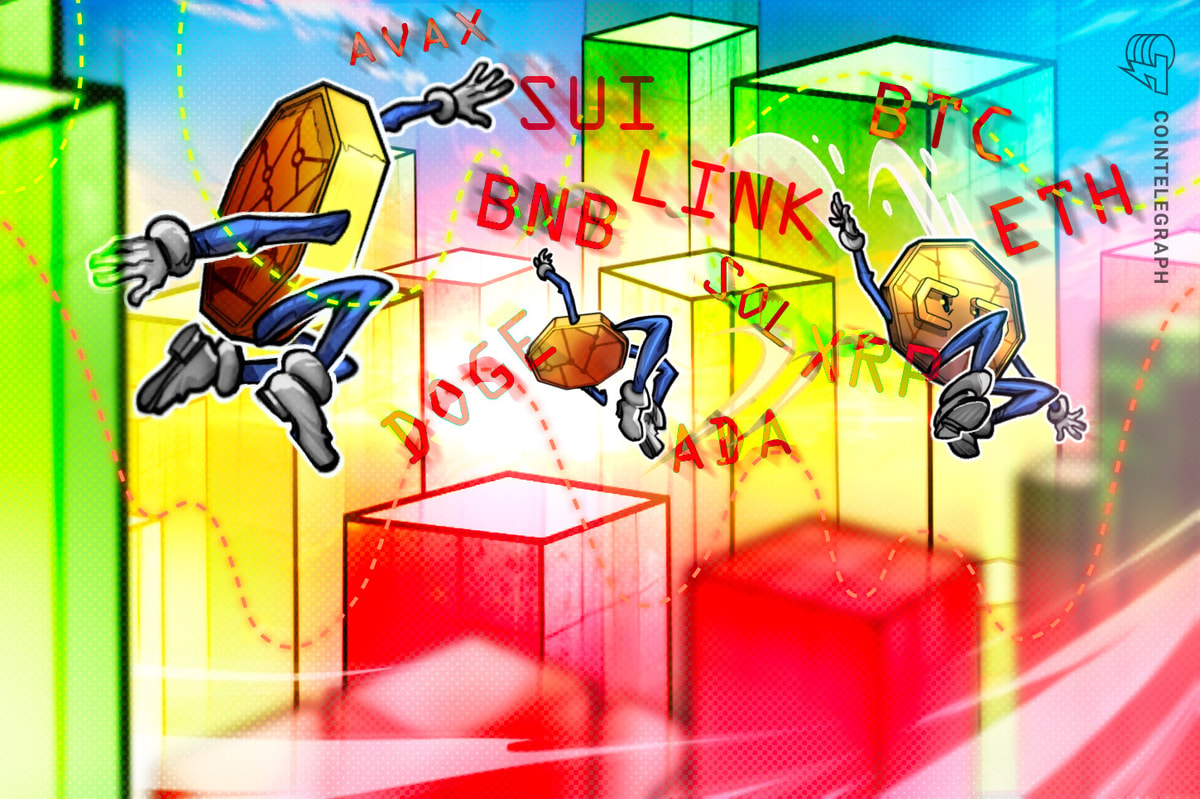Initial Crypto Offering (ICO) seems to have become the go-to approach to fundraising among startups on the Blockchain scene. However, by now there are multiple ways to go about an ICO campaign, and the jury is still out on which one of them is the best if any.
In order to make this choice somewhat easier, we tried to figure out which options are available to the new companies, and what are their respective advantages and downsides.
And instead of trying to make assumptions, we have decided to ask someone with plenty of personal experience. Cointelegraph has reached out to two companies. One with an ongoing ICO, and another which has just finished its campaign: MobileGo and Encryptotel, respectively. They have told us about the decisions they had to make, and the lessons they have learned in the process.
Preparing for a campaign
So, when it comes to ICOs - crowdfunding via cryptocurrency tokens - what are the options available to a young Blockchain-powered startup? Here is what Encryptotel told us:
“There are a number of ways of going about a crowdsale. We could have raised money in ETH, using the Ethereum platform, as several recent ICOs have done. Like many other cryptocurrencies, we thought about collecting money to create a new Blockchain – either a clone of Bitcoin or writing one from scratch.”
So, basically, it boils down to three different paths.
Developing and launching your own token
This can be considered ‘the original’ way of ICO. It has been in use since 2013, when Mastercoin, a cryptocurrency and communications protocol, has conducted a crowdsale of 500,000 tokens. It makes sense when the product of a company is a cryptocurrency; if that is the case, then a portion of the total supply of tokens can be sold to the grassroots user base, in order to fund further development and marketing of the coin. However, the product may be something different, where a cryptocurrency is only a part of the whole picture, and in such cases, there are other options available.
Launching a second-layer token, on top of an existing one
There are some cryptocurrencies out there, which, by the virtue of their design, allow users to build the so-called ‘custom tokens’. This implies taking a crypto token and attaching some data to it, which repurposes it for alternative uses. One of such uses is conducting a crowdsale. A prime example of a cryptocurrency like that is Ethereum, which has already been used in countless ICO campaigns since its launch in 2015.
Using a purpose-built ICO platform
These are platforms, such as Waves or ICONOMI, which have been created specifically for the purpose of easing the process of launching and conducting an ICO as much as possible. They work in a somewhat similar way to Kickstarter, by allowing the companies to begin their ICOs in just a few clicks, and aggregating those campaigns for the investors’ convenience.
Making a choice
Naturally, after considering all the available options, the company has to make a choice. That choice will be defined by the advantages and the downsides of the possible approaches.
When it comes to developing your own token, the best part is the control you have over it. All characteristics of the cryptocurrency will be as you make it: the security algorithm, the available supply, the emission rate, any additional features, and so on and so forth.
Whenever the main product of a company is built around a cryptocurrency, or actually is a cryptocurrency, this control may be all-important. However, that isn’t always the case, and a product may only need some basic features, which can be provided by a number of the existing cryptocurrencies.
Also, the companies do not necessarily have to start with a working product. Sometimes an ICO is just that - a fundraising campaign, whose only purpose is to secure money for the production of the actual solution. If a startup’s team is trustworthy and it’s development plans are solid, then the second and third options may be preferable.
Speaking of which, creating a custom token, or launching an ICO platform are options which are somewhat similar in their pros and cons. They both impose some limitations on the features of the coin, but, as a trade-off, are much easier, faster and cheaper to set up.
The difference is that ICO platforms, by their nature, go further to make their users feel as comfortable as possible. With custom tokens, you are largely left to your own devices. For example, Ethereum offers Solidity - a programming language, which can be used to develop an ICO token. But when it comes to the actual development process, you’re on your own.
Conversely, the entire point of ICO platforms is making the launch as easy as possible, which means simple and intuitive deployment. Another major advantage is that platforms aggregate many ICO campaigns at the same time, which creates a larger audience for every project to tap into.
Here is what MobileGo had to say about the decision they have made:
“[Ultimately, we have chosen Waves Platform for a] few reasons: redundancy of Blockchain, fiat on-ramping, easy-to-use wallet gui on chrome app.”
And this is how Encryptotel has justified their choice:
“Firstly, we’re familiar with the platform and have good knowledge of it, having been around since the beginning. This gives us a high degree of confidence that it will have the functionality and performance we need.
In particular, we’ve been impressed with Waves’ powerful token operations. It’s extremely easy to create new tokens, to distribute them to a large number of investors, to trade them using the integrated decentralized exchange, and so on. This will make certain aspects of our business very easy – for example, buying back tokens with revenues and burning them to increase the value of the remainder.
Lastly, Waves has a very strong community. There’s a tremendous amount of enthusiasm and expertise there, waiting to be tapped. We’ve been fortunate enough to enjoy a great deal of support from them.”
Campaign in progress
One can assume, that given the differences between the three approaches, their user experience will also vary - and it does.
With proprietary or custom tokens, as the saying goes, your mileage may vary. These options are not provided by companies, so there are no people in charge of user experience, and every ICO campaign here is unique.
You are left to do your own development, marketing, communications, and the final results will mostly depend on how well you can manage these tasks. Some campaigns have been able to bring in tens of millions of dollars, like the infamous The DAO. Others have utterly failed to reach their targets, and are now forgotten.
However, the issue of user experience is a make it or break it matter for ICO platforms. Their very existence depends on whether they are able to deliver the best set of tools and the highest degree of support on the market. This logic is confirmed by the own words of our companies.
Encryptotel says about their experience:
“It has been nothing but a positive experience. Before deciding on the Waves platform, we conducted all the necessary tests and were impressed by how simple it was to create a token. The Waves lite client makes things very easy in this regard.
Additionally, personal assistance by both Sasha (Waves CEO) and the core developers has been invaluable. The community has backed us with help and advice – it’s a great community, and we’ve had lots of contacts and resources for publicity during the crowdsale. We were also overwhelmed at the investment of a total of well over one mln WAVES to date – around $700,000.”
MobileGo had the following to say:
“I will just say that we are one of the largest ICO`s ever on Waves platform and that would not happen without the assistance from Waves team.”
Lessons learned
So, the basic conclusion is this: when choosing among the three main ways of conducting a crypto crowdsale, there is a trade-off between convenience and degree of control over the resulting token.
A startup, whose product is a cryptocurrency, or some sort of software solution built on top of it, may be better off with developing its own coin or creating a custom token on Ethereum, for example. Then again, given the high degree of technical aptitude required to even approach this task, they probably already know that.
For everyone else, it makes more sense to use a purpose-built ICO platform, and enjoy the many advantages it offers. The low cost and complexity and high speed of token deployment, coupled with an already present community of investors are what makes these platforms worth it, despite the decreased customizability of tokens.
In conclusion, we have asked our companies one last question.
CT: If given the chance to start over, would you change the way you’ve conducted the campaign in any way?
MobileGo:
“Many things one can improve and realize those are the real opportunity. One thing will not change for sure and that is the team of highly skilled people from Gamecredits, Waves, ETH and everyone else who were instrumental in the creation of MobileGo.”
Encryptotel:
“There are a lot of moving parts to a crowdsale and the crypto and crowdfunding landscape is rapidly changing in the first place! We had some problems with the platform we used to collect funds, but our supporters have backed us to the tune of $2 mln and counting, so we must have done something right! We’re very much looking forward to the end of our crowdsale, and being able to get on with finishing our core app and driving the company forwards.”










